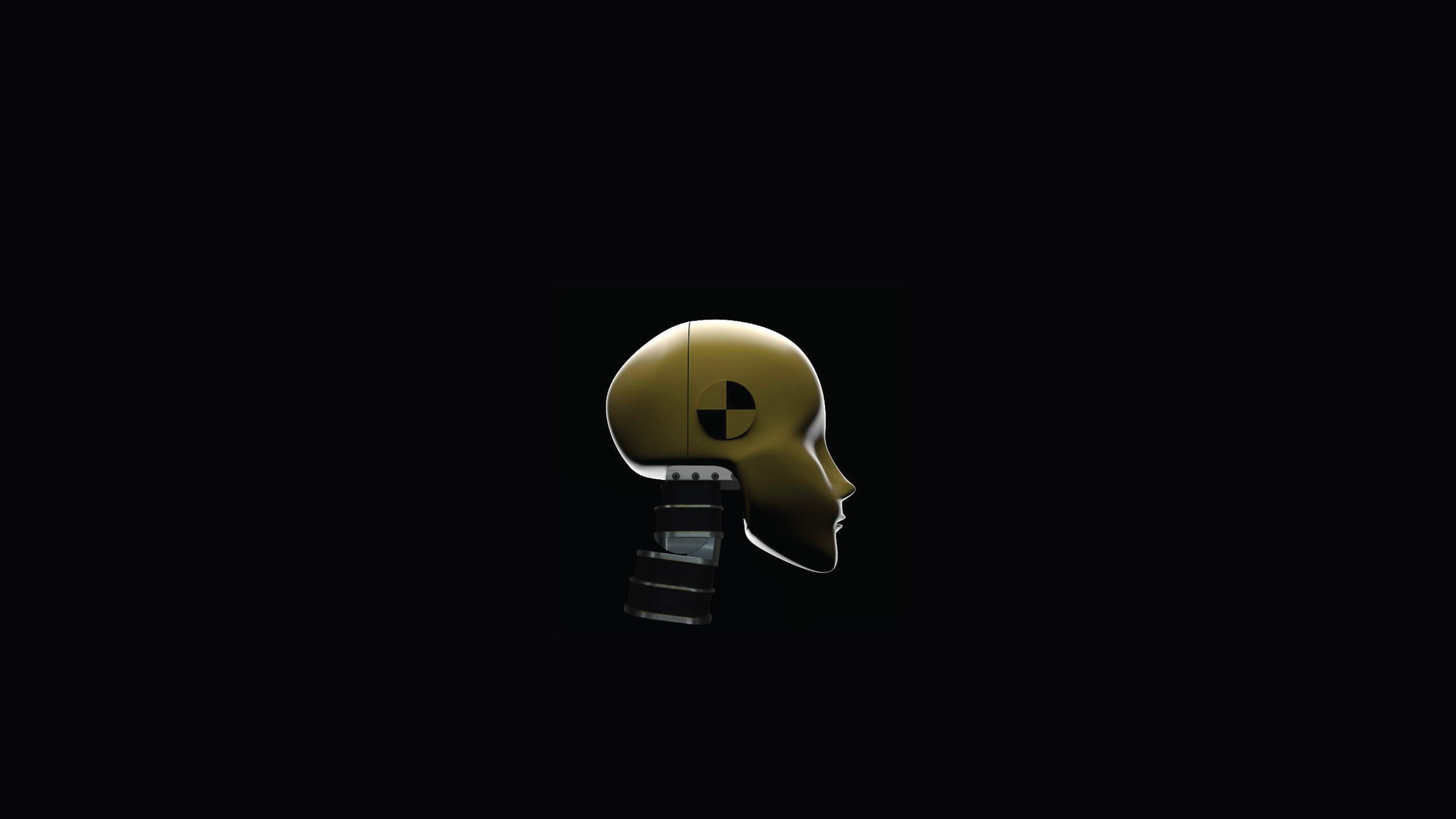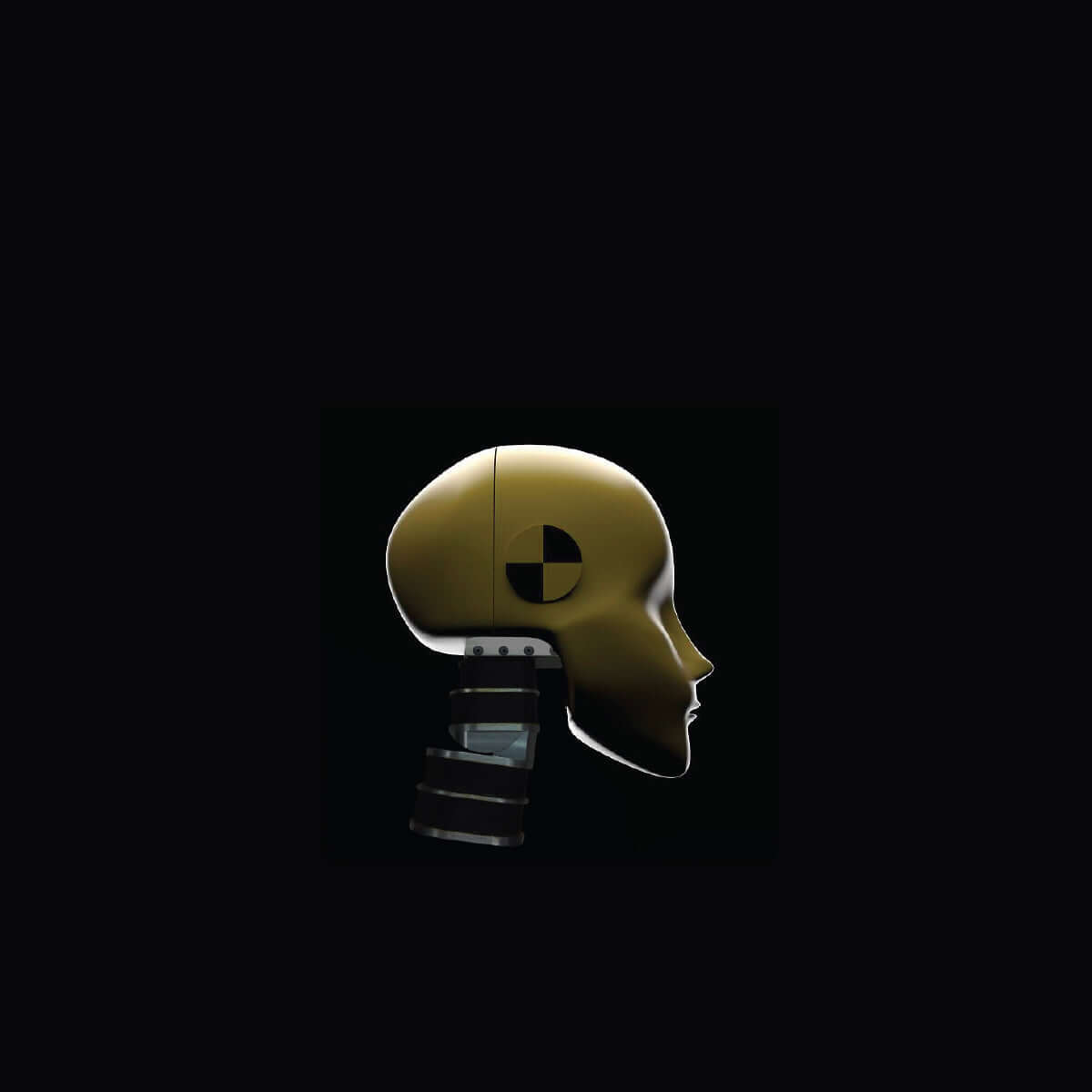Real World Results
Where every possible variable is accounted for

Critical neck injuries
Lower result is better
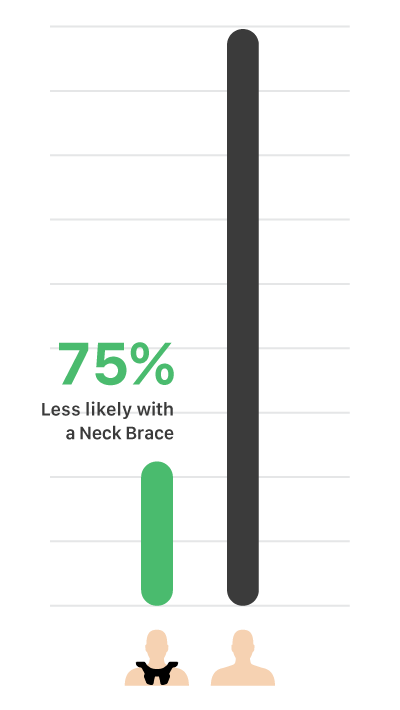
Non-critical neck injuries
Lower result is better
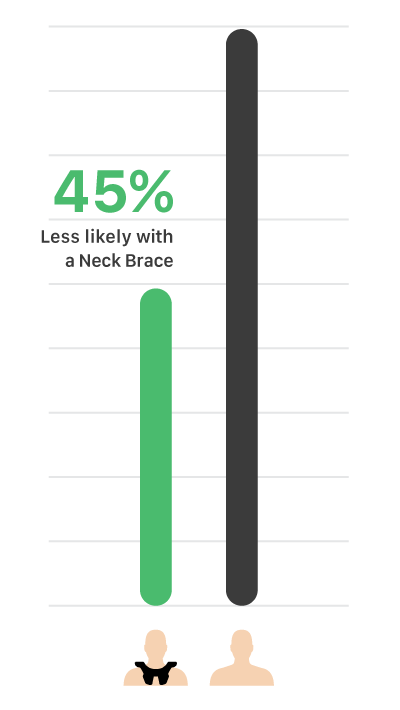
Collarbone fractures
Lower result is better
The results from over 10 years, and 9400+ detailed injury reports are overwhelmingly in favour of neck braces - lending credibility to the lab testing results published by neck brace manufacturers
Lab Testing
Atlas uses a 3rd party lab in California - keeping us removed from the process. The lab designs & performs the various test scenarios, then provides us with the raw, unbiased data and findings
The goal of lab testing is to work within specific parameters for high accuracy & repeatability. In the case of neck braces, the lab measures force reduction in various brace vs no brace scenarios
Average force reduction with and without an Atlas Brace™ are shown below*
Lower results are better
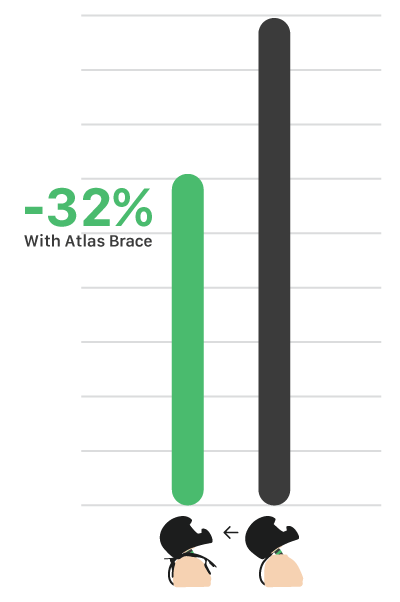
Hyperextension
Head backwards/up
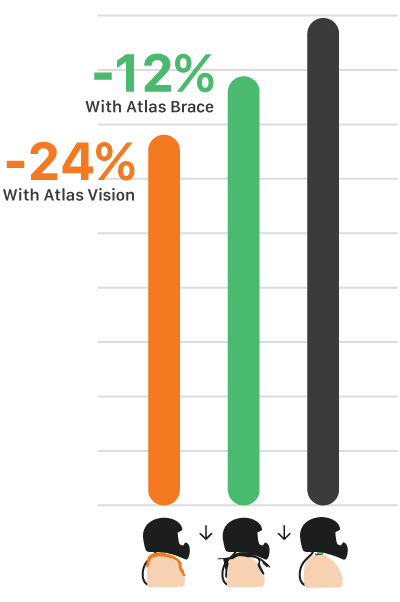
Axial Load
Compression, top of the head

Hyperflexion
Head forwards/down
Our goal is to lower the peak forces enough to get below the threshold of severe injury
Our flexion and extension testing also includes compressive forces - Performing tests this way mimics typical real life crash scenarios to provide accurate and meaningful data
While it may not be directly comparable to other brands data, we believe this more stringent approach is the correct method to validate the effectiveness of neck braces
Test equipment
The best equipment available helps produce the most applicable results
MATD Neck
The Motorcycle Anthropometric Test Device (MATD) neck was specifically developed (and certified) to be more realistic for motorcycle crash data acquisition than a standard car crash type neck
We use one of ~15 that exist in the world

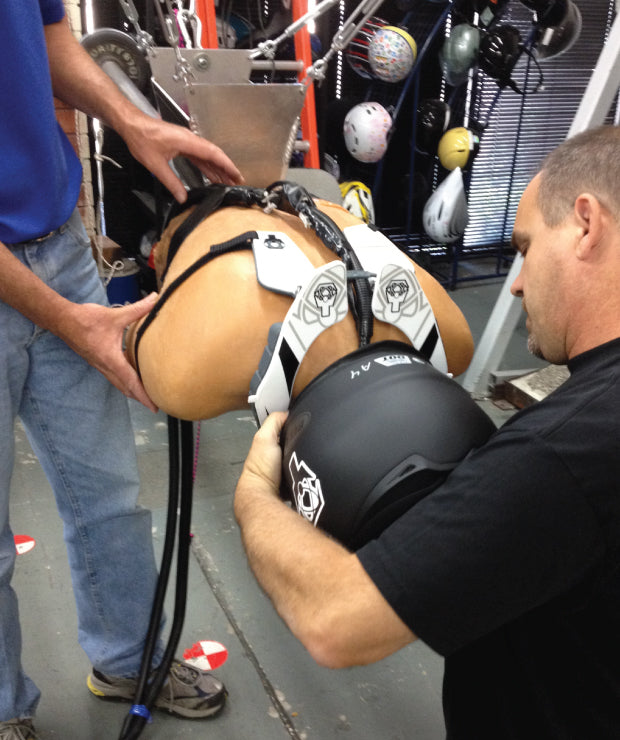
Test Rig
The Dummy is made up of an instrumented upper torso surrogate fitted with a Hybrid III head-form and MATD neck
The rig "flys" in a superman position into a 30° or 90° surface - The closest replica of common over-the-bars type crashes onto flat ground or an incline surface
Starting height (and therefore speed) can be manipulated to simulate low or high G-force scenarios. Orientation of the dummy can also be controlled (face up, face down, etc)
Simulating real world scenarios helps prepare for real world scenarios
The Head
Testing has also shown force reduction to the head is possible in certain scenarios - as evident from the helmet damage shown here**
Identical tests were performed with and without a brace using two identical brand new helmets
Left - Fractured shell (no brace)
Right - Scuffed paint (with Atlas Brace™)

The probability of injury is never zero
Crashing cannot be eliminated, the only way to reduce injury is to wear the best safety equipment
Have a question? Contact us >
*Our testing is performed different than other manufacturers, results may not be directly comparable
**Neck braces are not designed or intended to reduce head injuries. Concussions and other serious head injuries do not require crashing, compressive forces, or involvement of the neck brace to occur.
Disclaimer: Atlas products cannot protect the user from all foreseeable, or unforeseeable impacts. By using this product the user accepts the risks involved with extreme sports, and understands that no safety equipment device can guarantee that any injury will be prevented. Motor sports, racing, and extreme sports can be dangerous. Participation in these activities can result in severe brain, head, neck, spine, and other bodily injuries which may result in paralysis or death. Perform these activities with caution and always wear the appropriate safety equipment. The Atlas Brace™ cannot protect against all potential impacts and/or injuries. Although the Atlas Brace™ is designed to help reduce the risk and/or severity of Cervical spine injuries, there is no guarantee that injury will be prevented by the use of this, or any other safety equipment - Use at your own risk.



